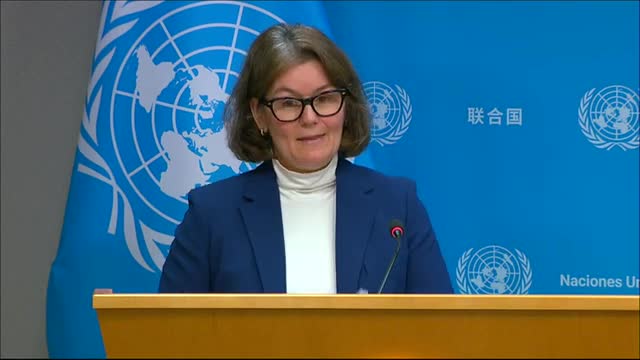UN humanitarian missions deliver aid amid escalating violence in Gaza Strip
December 23, 2024 | United Nations, Federal
This article was created by AI summarizing key points discussed. AI makes mistakes, so for full details and context, please refer to the video of the full meeting. Please report any errors so we can fix them. Report an error »

In a stark reflection of the ongoing humanitarian crisis in the Gaza Strip, Tom Fletcher, the Undersecretary General for Humanitarian Affairs, painted a grim picture during a recent United Nations briefing. He emphasized that the relentless violence has left civilians with nowhere safe to turn, as schools, hospitals, and essential infrastructure lie in ruins.
Reports from the ground indicate that intensified fighting by Israeli forces in northern Gaza, particularly around western Beit Hanoun, has led to significant displacement, predominantly affecting women and children. The situation escalated further with alarming reports of direct gunfire targeting Kamal Adwan Hospital in Beit Lahia, where ongoing bombardments have put patients' lives at risk. Dr. Tedros, the Director-General of the World Health Organization, expressed deep concern over the hospital's precarious position amid the conflict, urging for the protection of civilians and medical facilities.
Despite the chaos, the United Nations Office for the Coordination of Humanitarian Affairs (OCHA) reported a glimmer of hope. On December 20th, two UN-led humanitarian missions successfully entered the besieged areas of North Gaza, delivering much-needed supplies. The first mission provided food and bottled water to the residents of Beit Hanoun, while the second, organized by WHO, supplied Kamal Adwan Hospital with 5,000 liters of fuel and 100 units of blood, in addition to transferring patients to Al Shefa Hospital in Gaza City.
These missions, however, were the only two approved out of eight requests made by the UN to access North Gaza between December 18th and 22nd, highlighting the severe restrictions faced by humanitarian efforts in the region. As the situation continues to unfold, the urgent need for safe passage and support for civilians remains critical.
Reports from the ground indicate that intensified fighting by Israeli forces in northern Gaza, particularly around western Beit Hanoun, has led to significant displacement, predominantly affecting women and children. The situation escalated further with alarming reports of direct gunfire targeting Kamal Adwan Hospital in Beit Lahia, where ongoing bombardments have put patients' lives at risk. Dr. Tedros, the Director-General of the World Health Organization, expressed deep concern over the hospital's precarious position amid the conflict, urging for the protection of civilians and medical facilities.
Despite the chaos, the United Nations Office for the Coordination of Humanitarian Affairs (OCHA) reported a glimmer of hope. On December 20th, two UN-led humanitarian missions successfully entered the besieged areas of North Gaza, delivering much-needed supplies. The first mission provided food and bottled water to the residents of Beit Hanoun, while the second, organized by WHO, supplied Kamal Adwan Hospital with 5,000 liters of fuel and 100 units of blood, in addition to transferring patients to Al Shefa Hospital in Gaza City.
These missions, however, were the only two approved out of eight requests made by the UN to access North Gaza between December 18th and 22nd, highlighting the severe restrictions faced by humanitarian efforts in the region. As the situation continues to unfold, the urgent need for safe passage and support for civilians remains critical.
View full meeting
This article is based on a recent meeting—watch the full video and explore the complete transcript for deeper insights into the discussion.
View full meeting